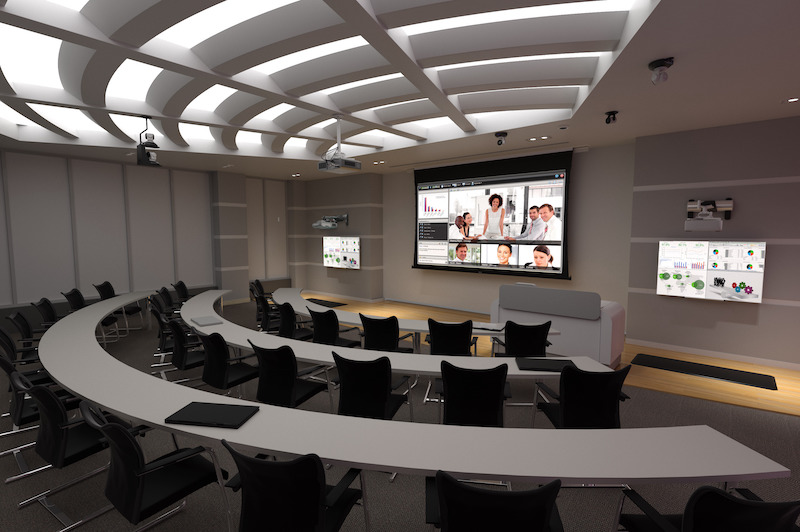
Hybrid meetings are not going away any time soon. Here are 6 reasons why they’re here to stay:
1. Flexible is the new normal
Through the pandemic, people got used to working from home, their vacation home, overseas, etc. Hybrid videoconferencing systems support that flexibility by allowing both in-person and remote participation.
2. Companies have access to global talent
With hybrid meetings making it possible to collaborate across different cities, countries, or even time zones, the expectation is gone that everyone be in the same room. As a result, businesses can search worldwide for the best talent.
3. Hybrid meetings help save time, money and the planet
Hybrid setups reduce travel costs, pollution and time away from other work — which businesses love for productivity and budget reasons.
4. Tech has caught up to the way we work now
Tools like Zoom, Microsoft Teams, Google Meet, and hardware like smart whiteboards and 360-degree cameras have made hybrid meetings more seamless and inclusive. When they are done right, remote attendees don’t feel like second-class citizens.
5. Employees are demanding more autonomy and work-life balance
Many people want the option to work remotely. Companies that embrace hybrid models are seen as more progressive and employee-friendly (which makes them more competitive).
6. Hybrid is more resilient
Hybrid models make organizations more resilient to disruptions like public health issues and weather events. Being able to switch seamlessly between in-person and remote work is a big asset.
So how do you get the AV right for hybrid meetings?
Your AV system design can make or break the experience for people attending remotely. Here are things to discuss with your audio video specialist to make sure everyone feels included and heard.
1. Prioritize clear audio first
When the audio is fuzzy, people tune out. The following decisions can ensure the best audio for everyone:
- Use ceiling mics in larger rooms to pick up voices evenly.
- Consider tabletop omnidirectional mics for smaller setups.
- Avoid relying on laptop mics; they’re usually not enough.
- Include noise-reduction tech when possible to cut out typing, AC hum, etc.
- Ask everyone to mute when not speaking (or use auto-muting technology).
2. Use good quality video
All attendees want to see faces, body language and whiteboards. Here’s how to provide excellent video:
- Install a wide-angle or 360° camera if the meeting will have multiple speakers.
- Position the camera at eye level, near the screen where remote participants appear. This helps simulate face-to-face interaction.
- Avoid backlighting (like a window behind the speaker). It makes faces appear as silhouettes.
- Using more than one camera reduces or eliminates the blur effect of a camera moving from one side of the room to another.
3. Share screens thoughtfully
- Have one person share to keep the visuals clean and consistent.
- Use dual displays: one for shared content, one for viewing remote participants.
- Use wireless screen sharing (Air-Media, Screenbeam, ClickShare) to keep things tidy.
4. Use the right platform and integrations
- Use Zoom, Microsoft Teams or Google Meet, which all have “room” versions designed for hybrid meetings (e.g., Zoom Rooms).
- Use calendar integration to make joining easy.
- Set up meeting presets or automation. Auto-launching the call at meeting time is an example.
5. Keep the setup simple
- The tech should be easy to use; no one wants to troubleshoot cables in front of an audience.
- Use a touch panel or voice control to start meetings.
- Test the system regularly to avoid having to fix it during the call.
6. Encourage best-practice hybrid behaviors
- Ask in-person attendees to speak clearly and avoid side chatter.
- Always address remote attendees directly and loop them in during discussions.
- Assign a “remote advocate” to make sure virtual participants stay engaged.
Top audio visual companies like Midwest Audio Visual can incorporate all these ideas into your hybrid design. Reach out to start a discussion.

